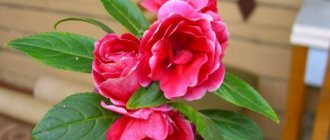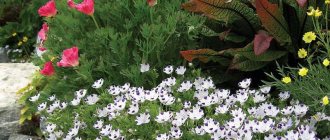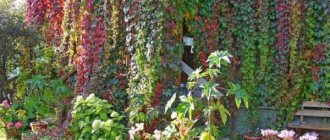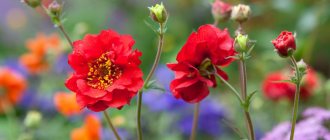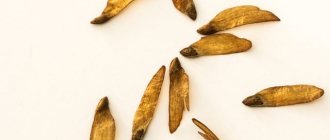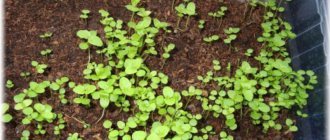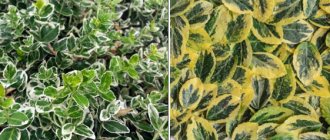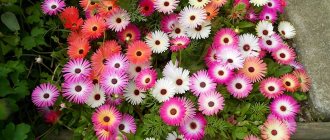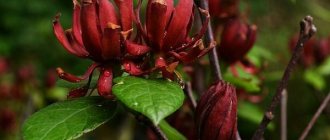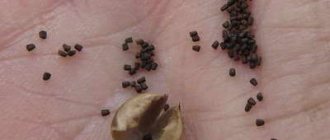- July 31, 2019
- Houseplants
- Ekaterina Komisarova
Today, almost every owner of a personal plot grows various plants on it. In order for them to delight with their beauty, they need to be provided with proper care. Impatiens, also popularly known as charming impatiens, is one of the most common summer herbaceous plants grown as garden flowers.
Despite the fact that the buds and leaves are not particularly decorative or attractive, the bushes look very elegant. The plants are unpretentious and easy to care for, so there are no special problems with their cultivation. Let's figure out how to grow balsam at home, and also discuss under what conditions it grows best. From this article you can learn about the correct collection of seeds and their germination, replanting and features of flower care.
Popular types
Impatiens (how to grow this crop will be discussed in detail below) is a representative of the annual plants of the shrub group. Its height at home can vary from 25 to 50 centimeters. A distinctive feature is that during the growth process, characteristic droplets are formed on large leaves, characteristic only of this family of shrubs.
During the flowering period, large buds appear on the shoots. In shrubs growing in the wild, they are purple or pale pink. But in houseplants, color shades can be very different. Today on sale you can find a huge number of hybrids with simple and double flowers of any color, except yellow and blue. The flowering of balsam (you will learn later how to grow a flower with minimal physical effort) is quite long. It begins in mid-May and continues until the onset of the first frost.
Breeders have developed many varieties of shrubs that differ in characteristics and decorative properties. But the following varieties are considered the most popular:
- Waller's touchy-feely. It has good frost resistance, making it excellent for growing in regions with harsh climatic conditions. However, the shape of the bush is not too lush, and the flowering is rather sparse.
- Balfour. It differs from its fellows in its excellent decorativeness. The height of the bushes can reach one meter. The flowers are very large and can be purple or pink. Thanks to its lush crown, it is often used to create hedges and plantings.
- Iron-bone. It is a New Guinea hybrid with large erect shoots. Gained wide popularity in landscape design. With proper maintenance it can grow up to two meters. The flowering is not only long-lasting, but also very lush. Disadvantages include difficulty in care.
Having considered the most popular varieties, we can talk about how to properly grow balsam. There is nothing complicated about this, but you must follow some rules. If you do not adhere to technology, the plant will take a long time to take root in open ground, and flowering will begin much later.
Garden balsam
Impatiens are well compatible with other annual flowers.
Impatiens love a lot of watering.
Impatiens are not particularly demanding on lighting and can grow in partial shade or full sun. But too intense sunlight can negatively affect the flowering of the plant, so it is better to plant it on the eastern side. There are also no special requirements for the soil, but it is clear that the more fertile it is, the more extensive and beautiful the flowering will be.
Impatiens love warmth, so even at a temperature of +8°C the plant can get sick and die. For this reason, planting in open ground is carried out during a period of consistently high temperatures.
In order for balsam to grow quickly, it needs to be watered regularly. This plant loves moisture very much, so in drought conditions its shoots can quickly wither.
To ensure long flowering, it is recommended to feed balsam once every 2 weeks. It is best to use foliar fertilizing, but you should avoid nitrogen fertilizers.
Impatiens are prone to insect damage, so it must be sprayed to prevent the appearance of mites.
To do this, you can use tobacco infusion, as well as infusion of onion peels, garlic and other preparations of natural or chemical origin.
Return to contents
Basic methods of reproduction
Impatiens can be grown in two ways: by seed and by seedlings. Each of them has certain subtleties, as well as advantages and disadvantages. According to experienced gardeners, both methods are effective, but the first is considered the best. How to grow balsam from seeds? There is nothing complicated here, but it is very important to use high-quality planting material. You can either purchase it in specialized stores or prepare it yourself. Seeds are collected from the buds at the end of the flowering period. In this case, the following nuances must be taken into account:
- The seeds fully ripen at the end of summer. They are contained in small green boxes located inside the flowers.
- It is best to collect movra from buds that are slightly unripe. Ripe capsules are very fragile, so they can burst, causing the seeds to simply scatter.
- After collection, they are placed for storage in a dry and warm room, where they will remain until full ripening.
- If the box opens when touched, this indicates that the seeds are completely ready for sowing.
How to grow balsam at home and properly care for it will be discussed in one of the following sections.
If the fruits ripen unevenly
How to collect seeds of foxglove, delphinium, mallow, snapdragon, mullein and clarkia
This must be done when the fruits located in the lower part of the peduncle begin to crack. We cut off the upper part of the peduncle, on which the green fruits are located, and throw it away. For the rest of the shoot we put on a narrow paper bag, for example, the kind used to pack a baguette. We tie a rope at the bottom of the bag and cut off the peduncle below the bag. Turn the bag over and the seeds spill out of the boxes. Since the seeds spill out gradually, we hang the bag in a dry, warm room and wait.
There are other ways to collect the seeds of these crops. You can cut off the entire peduncle when at least a few of the lower bolls turn brown, lay it out in a dry place and wait until some of the upper bolls ripen. You can also collect seeds gradually, picking only ripe boxes.
How to collect lavatera seeds
Selectively pick off dried fruits that contain brown or black seeds. Alternatively, you can cut the entire plant when most of the seeds reach maturity.
How to collect seeds of petunia, purslane, sweet tobacco, morning glory
We selectively collect dried and browned boxes and pour out the seeds from them.
How to collect salvia seeds
We cut off the entire flowering shoot when the lower flowers turn brown, without waiting for the entire inflorescence to turn brown. If you wait, the seeds will fall off. We lay out the cut flower stalks in a dry place for ripening.
How to collect seeds of verbena, lobelia, matthiola bicornuum, nigella, flax, nemesia, godetia, schizanthus, toadflax
We cut off the entire inflorescence when most of the boxes (pods) dry out and take on a brown color.
How to collect ankhusa seeds
We cut off the whole plant when the first lower bolls turn black. Then we lay it out to ripen for at least 1 month.
How to collect kermek seeds
The scutes that have turned brown or turned yellow and have faded, faded funnel cups are subject to selective cutting.
Features of seed storage
In order for the planting material to be of high quality, have a good germination rate and retain the characteristics of the mother plants as much as possible, it must be dry. Therefore, the seeds must be dried before being sent for storage. To do this, they are laid out in matchboxes and left for some time in a dry and well-ventilated area, stirring occasionally.
When storing balsam seeds (we'll tell you how to grow seedlings later), you must follow some rules. Among the main experts are the following:
- Movra is wrapped in paper on which the date of collection is indicated.
- The envelopes are placed in a cool room in which a constant temperature is kept from 0 to 10 degrees Celsius and air humidity is at 60 percent.
If these conditions are met, the seeds are suitable for sowing for 8 years. During this period they maintain their quality and high percentage of germination.
Description of plant seeds with photo
After pollination of the balsam (natural or artificial), a green fruit appears in place of the flower, which, as it ripens, turns into a white-transparent oblong box with small seeds that look like dust. This box opens at any touch, so collecting seed material can be very difficult.
Optimal time for planting
Most people who do not know how to grow homemade balsam from seeds choose the wrong period for sowing. Experienced gardeners recommend planting in mid-spring. In regions with a warm climate or when cultivated in greenhouses, you can sow in early May. The planting material will have time to germinate quickly, and the plant will develop a healthy root system, so the flowering period will begin quite early.
Sowing technology
So, how to grow balsam from seeds? This question is asked by many novice gardeners. Agricultural technology is very simple and does not involve any specialized activities. For sowing, you can use low containers with a diameter of about 6-8 centimeters. As for the soil, ready-made mixtures are sold in gardening stores. You can also do it yourself at home. To do this you need:
- Mix peat and river sand in equal parts, then scatter them into pots and water generously.
- Prepare a weak solution of potassium permanganate and soak the seeds in it for 15 minutes.
- Sow mora by deepening it 2 millimeters into the soil and covering it with garden film or glass.
This, in fact, is the whole technology for growing balsam at home using the seed method. As you can see, there is nothing complicated about this.
How to plant balsam seeds?
If you want to get your own healthy seedlings, then you need to first study the advice of experienced gardeners on how to grow balsam at home, growing from seeds, and when to plant a beautiful flower in unprotected soil. It is not necessary to purchase ready-made soil in stores; the nutrient substrate is easy to prepare yourself. You need to mix 1 part vermiculite, 1 part sand, 1 part leaf soil and 2 parts lowland peat.
Planting balsam seeds for seedlings:
- We pickle the balsam seeds in a solution of potassium permanganate for 10 minutes.
- Next, soak the material for a day in warm water.
- It is advisable to select a container for sowing with a height of 8 cm.
- We make holes in the bottom of the box to drain liquid.
- We lay expanded clay drainage up to 2 cm high at the bottom.
- Pour soil into the container.
- To disinfect the soil, you can bake it in the oven a day before sowing or treat it with Fitosporin.
- Soaked seeds should be planted in the ground without being buried, lightly pressing them to the surface with the tip of a toothpick.
- The substrate is moistened using a spray bottle and covered with a bag until shoots emerge, leaving a gap for air to enter.
Balsam - growing from seeds in peat tablets
When working with a small amount of planting material, it is more convenient to grow balsam in peat tablets. In this case, the sprouts are strong, less dirt is formed, and the container is easy to place on the windowsill. The tablets are moistened with water until they swell. Then, without covering it with soil, we plant the seeds one at a time, gently pressing them to the ground. It is advisable to cover the container with film and place it in a warm and bright place, but not in direct sunlight.
How many days does it take for balsam to sprout?
Under optimal conditions, balsam seedlings appear within a week. Often the sprouts do not hatch smoothly, but you should not despair. Planting material in stores is sold in different quality and shelf life. You need to wait up to 2 more weeks, during which time all living replacements will germinate. Be sure to remove the lid or bag after the sprouts appear and transfer the container to a bright place; grow at a temperature within 17-20°C.
Why doesn't balsam sprout?
Often, amateur gardeners experience the death of young shoots or a poor percentage of healthy seedlings. This happens to inexperienced beginners who do not observe the temperature regime, water balsam incorrectly, grow from seeds, when to plant, and do not adhere to deadlines. There are several reasons that significantly influence the pipping of planting material, some depend on the gardener himself, and others on weather factors.
Why balsam seeds do not germinate:
- The soil has not warmed up well - the optimal temperature for the development of balsam is 18°C.
- If a box with crops is placed under the scorching sun and the soil warms up above 25°C, then the seedlings will die in their buds.
- The seeds were not soaked when planting.
- The soil structure is too dense - when growing from seeds, choose loose and soft soil for this crop.
- Use of expired seeds - for balsam the shelf life is 7 years.
- When grown in an acidic environment, germination rate decreases; we prepare soil for seedlings with a neutral reaction (approximately 6.2-6.5 pH).
Impatiens seedlings have stretched out, what should I do?
Often there is an unpleasant stretching of sprouts, which makes it difficult to care for, pick, and leads to lodging of plants on the soil. The reason lies in the early sowing of seeds, poor lighting in early spring, and elevated room temperatures. If the balsam seedlings have become very elongated, then the seedlings can be saved by adding soil to the level of the cotyledon leaves. When growing in deep containers or boxes, it is more convenient to do this, otherwise you will have to increase the sides to the desired height using waterproof material.
Picking balsam from seeds
Timely picking of balsam is done no earlier than the young plant has fully developed two true leaves. Before this operation, we water the soil with the seedlings to reduce the risk of injuring the roots and thin stem. Use a spoon or spatula to pry up the seedling and remove it from the common box. The sprouts should be buried down to the cotyledon leaves. Picking can be done in plastic bags, glasses, cassettes. We make a hole in an individual container in advance to drain excess water.
05/13/2018 admin Comments No comments
What to do next?
Above it was described in detail how to grow balsam seedlings from seeds. But that is not all. Next, she needs to provide proper care. The first shoots usually appear after 3 weeks. As soon as this happens, the film or glass can be removed from the pots. If necessary, artificial lighting is installed for seedlings. As it grows, soil is added to the container, and it is also irrigated from a spray bottle with settled water at room temperature. But it is very important not to overdo it with moisture, since its excess can lead to rotting of the rhizome and death of the flower. It is best to water every evening after dusk. If the weather is cloudy and rainy, the intensity of watering is reduced.
If we grow balsam seedlings ourselves, we need to monitor the level of salts in the soil. Their excess can lead to various undesirable phenomena. The presence of problems can be guessed by the appearance of a white coating on the surface of the substrate. If this happens, the only way out is to replant the plant and completely replace the soil. You can avoid excessive salt accumulation by using desalinated or rainwater for irrigation.
As soon as the seedlings reach a height of two centimeters and two full-fledged leaves are formed on them, they can be planted in separate cups. To speed up growth, the tops should be pinched. Planting in open ground can be done only after a well-developed root system has been formed and the seedlings have become small bushes.
Growing from cuttings
Propagation of balsams by cuttings is also practiced. Cuttings can be carried out at any time of the year. Cuttings quickly take root and grow into new plants. This happens as follows:
- Make cuttings of 5-6 cm in size, but they should have 3-5 leaves.
- Remove the lower leaves of the cuttings and place them in a bowl of water, place it away from direct sunlight.
- At about 7-10 days, roots appear, after which the cuttings can be placed in pots to grow on a windowsill or planted directly in open ground.
Further caring for plants consists of systematic watering, sufficient lighting and maintaining the temperature at 20-22 degrees.
You should not water too often and abundantly, because the stems of balsams are quite tender and often rot.
Where is the best place to plant seedlings?
It is best to grow balsams on the eastern or western side of the site. With sufficient lighting, the sprouts will quickly gain strength and bloom for a long time.
If you plant seedlings in a shady place, the plants will grow in length, but will bloom half as much as usual. If you grow flowers on the sunny side, then in the midday heat they will need to be shaded.
“Vanka wet” can be planted in a flowerbed with any variety of flowers, but the best neighbors with which it looks great are verbena, fuchsia, begonia and ageratum.
How to plant in the ground?
Seedlings that have grown well and become strong in the house can be planted after the end of frost.
Before planting, they need to be hardened off and allowed to get used to the street. To do this, containers with seedlings need to be taken out to an open balcony or garden.
For seedlings, you need to make small holes at a distance of 25-30 cm. If the soil is poor, then you need to pour a little peat, humus and sand into the holes. Carefully remove the plant bushes from the container, place them in the hole and sprinkle them with a mixture of soil and other fillers.
After planting the seedlings, they need to be watered and mulched with sawdust or other material. You can add splendor to the future bush by pinching the tops.
Picking balsam. Video:
Rules for planting in the garden
It was described above how to grow balsam from seeds at home. By adhering to the described technology, you will be able to obtain high-quality seedlings that will quickly take root in a new place and acclimatize. However, specialized literature says that you need to follow some rules when transplanting plants from pots to the garden. In particular, this concerns the choice of land. A quiet, dark place, protected from drafts, is best suited for this type of shrub. For example, you can plant along a fence or building, as well as near trees.
Despite the fact that balsam is distinguished by its unpretentiousness, you need to take planting seriously. The key requirements for good growth are an effective drainage system and soil that is loose and nutritious. Even a slight stagnation of moisture can destroy the plant. If your garden plot has heavy soil with high acidity, then they are first diluted with sand and lime.
Mature bushes are very lush, so when planting seedlings, you must maintain a distance. At least 30 centimeters should be left between each plant. Otherwise, they will interfere with each other, taking away nutrients.
How to properly care?
You already have an idea of how to grow balsam. But in addition to the basic technology of seed propagation, you also need to familiarize yourself with information on how to care for shrubs. The specialized literature says that the plant is a moisture-loving plant. But experienced gardeners say that excessive watering is very dangerous. They can lead to rotting of the root system and death of the flower. Therefore, they are not done too often, periodically spraying the leaves with water from a spray bottle.
Mandatory procedures are fertilizing. Without them, flowering will be short and sparse. Fertilizers are applied to the soil at the end of spring, while buds have not yet appeared on the shoots. It is best to use complex mineral mixtures with a high nitrogen content. As soon as the flowering period begins, they switch to potassium and phosphorus fertilizers, which are added to the plants for two weeks, after which they are stopped.
Since balsam belongs to the group of annual plants, rejuvenation is not required. The crown of the bushes is very lush and has the correct shape, so even without pruning it looks very attractive and decorative.
Diseases and pests
Impatiens (how to grow a flower using the correct technology was described earlier) is characterized by good health. But, like any other garden plants, it is still susceptible to some diseases and harmful insects. The most common problem is spider mites. As a rule, it affects shrubs due to too low air humidity. Therefore, if you create an optimal microclimate for plants, you can avoid many maintenance problems. With excessive watering and stagnation of moisture in the soil, there is a high probability of sciarids appearing. Therefore, it is recommended to adhere to a watering schedule.
Harmful insects can also become carriers of many fungal diseases. Brown spots on leaves and shoots will help you find out about their presence. In later stages, a white coating appears on the plant. In this case, there is practically no chance of saving the bush.
In addition, balsam can become sick as a result of bacteria entering the soil along with water. The risk of infection increases with hypothermia and non-compliance with temperature conditions.
Another common disease is powdery mildew. With it, a characteristic white coating first appears on the leaves, which eventually spreads throughout the plant. To save balsam (you can learn how to grow the plant in this article in detail) you need to remove all affected leaves and spray with a solution of soda ash. To prepare it, you need to dilute 2 grams of the product per liter of water. In addition, copper sulfate effectively copes with powdery mildew. It is prepared in accordance with the instructions specified by the manufacturer.
One final problem that many gardeners regularly face is rot. As a rule, it appears in winter due to too frequent watering. It is very difficult to save a plant from it. In most cases it dies.
To avoid any problems with diseases and pests, it is necessary to create an optimal microclimate for the plants, follow the basic rules of watering and feed the balsam in a timely manner. With sufficient nutrients and microelements, flowers grow healthy and withstand negative environmental conditions well.
